What’s not to love about a cute chicken that has a vibrant and lovable demeanor and lays a wide variety of colorful eggs? And that’s not all Easter Eggers have to offer.
Easter Eggers are also a minimal maintenance backyard chicken breed for experienced and beginner owners alike.
From their origin to their temperament to their dual-purpose nature, this article covers everything you need to know about the famous Easter Egger chicken breed. Read on for a detailed overview.
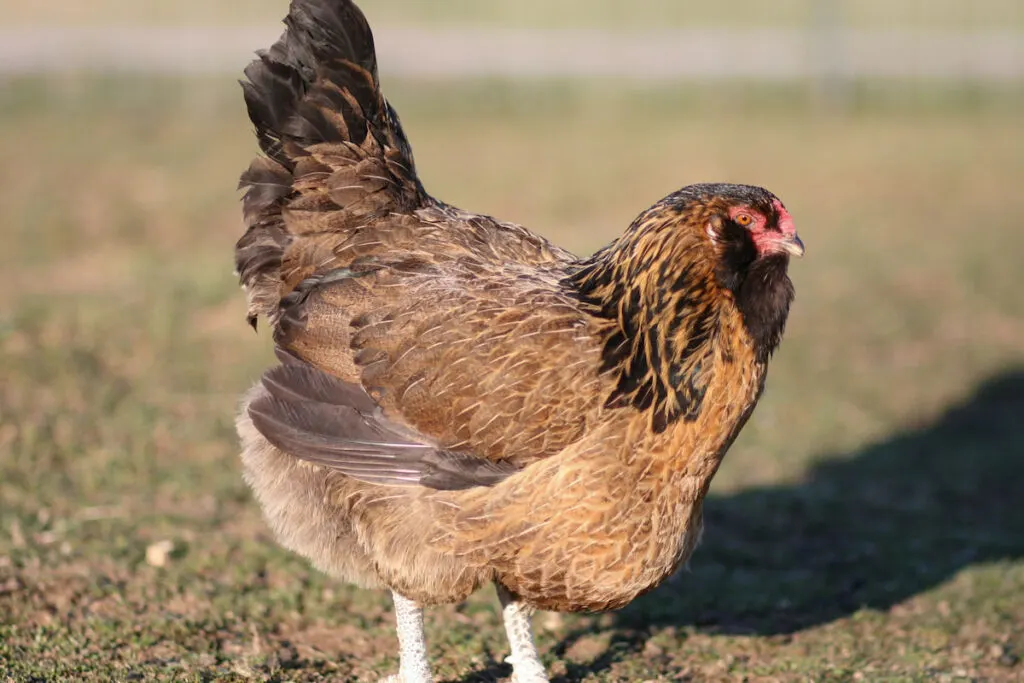
Table of Contents
History
Contrary to what you may expect, Easter Eggers are more of a hybrid or breed variety than they are an individual breed.
It is unclear when the Easter Egger chicken variety rose in popularity in the United States. Breeders, however, believe that it is from the 1970s onwards.
This was after Ameraucana chickens were crossed with other chicken breeds to eliminate the defective ear tuft gene found in their parent breed, the Araucana chickens.
Since Easter Eggers do not conform to any breed standards, neither the American Bantam Association nor the American Poultry Association recognizes them as a chicken breed.
Background
Initially, people believed that the Easter Eggers resulted from crossbreeding Araucana and Ameraucana chickens.
However, Easter Eggers are essentially a mix that results when either Araucana or Ameraucana chickens are crossed with other chicken breeds.
That being said, Araucana and Ameraucana are widely accepted as Easter Egger’s primary ancestors or parents. Here is a closer overview of these two Easter Egger ancestors.
Araucana
Araucana chickens first entered the United States from Chile in South America during the 1930s.
Unlike other chicken breeds, Araucanas are rumpless, which explains why they have no tail. They are a cross between Quetros and Collonca chickens and carry the dominant blue egg gene.
Araucanas feature a pea comb and ear tufts.
However, the dominant ear tuft gene is deadly to embryos and can cause them to die in their shells, especially if both parent chickens have it.
This has led to reduced Araucana chicken numbers, hence why people prefer breeding the Easter Egger chickens.
Ameraucana
On the flip side, breeders developed the Ameraucana chicken as an answer to the Araucana’s defective gene problem.
Ameraucana is a cross between Araucana and other chicken breeds in an attempt to eliminate Araucana’s problematic gene.
Though breeders developed Ameraucana chickens according to their liking, the birds were primarily bred to eliminate the fatal gene causing ear tufts while retaining the blue egg gene.
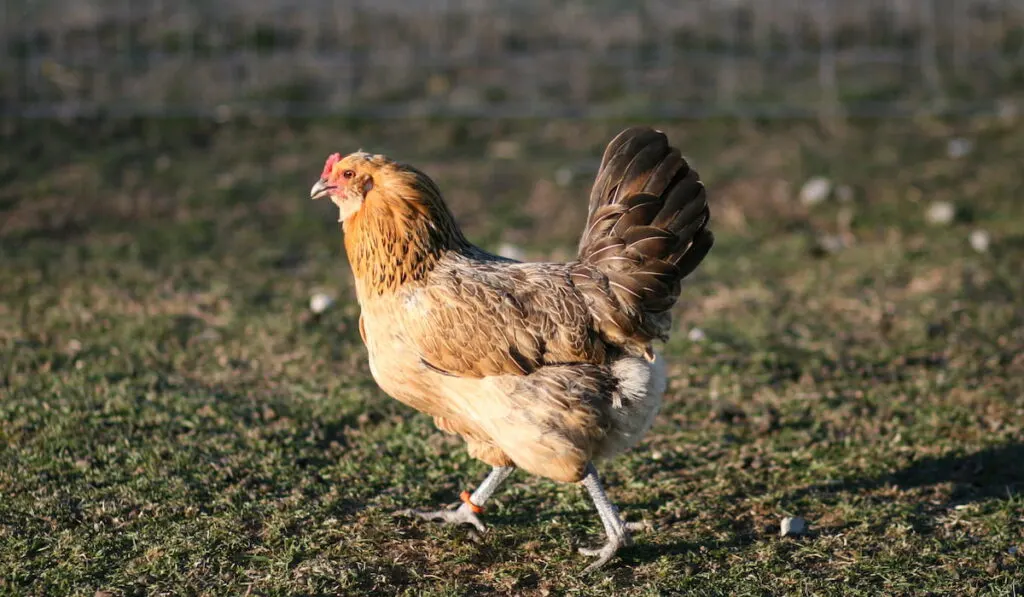
Appearance
Since Easter Eggers inherit various traits and features from both parents, it is normal to find Easter Egger chickens that look different from each other.
While there are no standard appearance requirements with Easter Eggers, there are some features that cut across the board with this unique chicken variety.
For instance, Easter Eggers can feature any type of comb, but pea and single combs are the most common. The size and shape of the combs may vary from one chicken to another.
Depending on how dominant their Araucana gene is, Easter Eggers may or may not be rumpless.
The rumpless varieties have a more rounded body without a tail while those with rumps have a tail.
Both the roosters and hens have small red wattles and white or red earlobes. Keep in mind, however, that depending on the parent birds, the earlobes can be any other color.
Similarly, Easter Eggers may sometimes have ear tufts and or be bearded, which contributes to part of their unique appearance.
While their legs are clean, they can come in almost any color imaginable ranging from yellow to slate to blue greenish.
They all, however, have four toes on each foot but their footpads can come in any color like their shanks.
As with every attribute of Easter Eggers, their plumage is highly determined by the dominant gene. As such, it can be anything from patterns to solid colors, or even splashes of various colors.
All in all, Easter Eggers’ attributes come down to the physical features of their parent birds. You can expect a unique chicken every time!
Size
Though Easter Eggers have round, plump bodies, they are generally a small chicken variety.
Easter Egger hens weigh up to 4 pounds, while roosters can weigh up to 5 pounds.
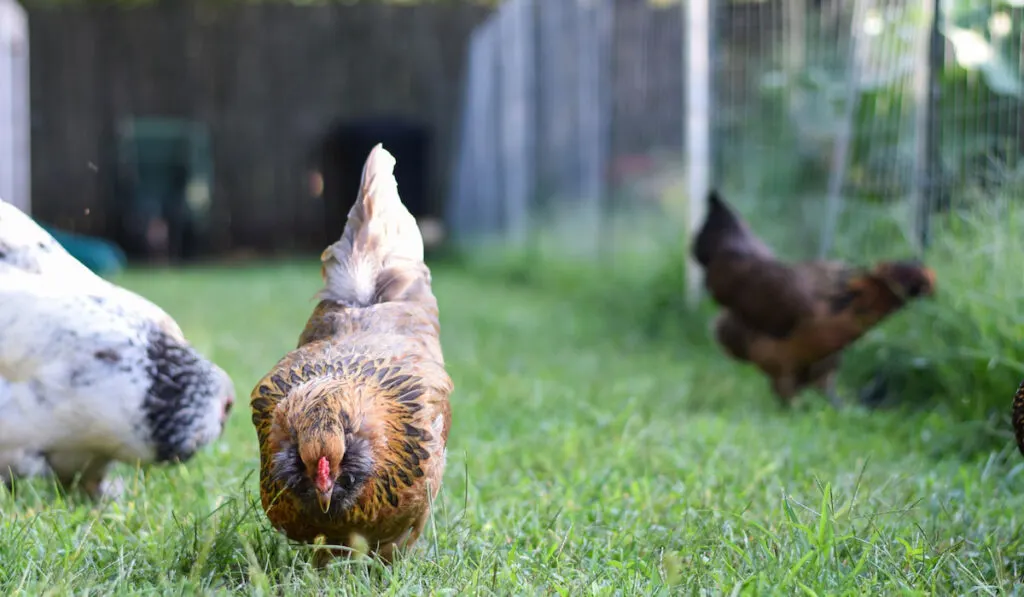
Uses
Easter Eggers are primarily raised for their eggs, not only for their unique Easter-egg-like colors, but also because Easter Eggers are consistent layers.
That being said, Easter Eggers are also commendable meat producers, but only on a small or subsistence scale since they are smaller birds.
Egg Production
Going by their name, Easter Egger hens are prolific egg layers that produce up to 4 extra-large eggs per week. This means that you can expect anywhere from 200 to 280 colorful eggs annually.
Depending on their genetic makeup, Easter Egger hens lay a range of different-colored eggs, hence their name. The colors can range from:
- Blue
- Cream
- Pink
- Hues of brown
Contrary to what people think, however, Easter Egger hens do not lay rainbow-colored eggs. Instead, an Easter Egger hen will only lay the same color eggs from maturity for the rest of their lives.
For instance, if a hen’s first eggs are blue, it will only lay blue eggs throughout its productive life.
If you wish to have a variety of colored eggs, you must raise a variety of hens with different genetic profiles for a chance at acquiring rainbow eggs.
The blue coloration of Easter Egger eggs is largely due to a liver pigment called oocyanin.
Unlike other pigmentation, it penetrates the surface of the eggshell such that both the outside and inside of the shell are blue.
Oocyanin is a byproduct of the bile produced in the liver resulting from a retrovirus infection that attaches itself to Araucana’s DNA.
This makes the blue color permanent compared to other eggshell pigments that can come off when vigorously cleaned.
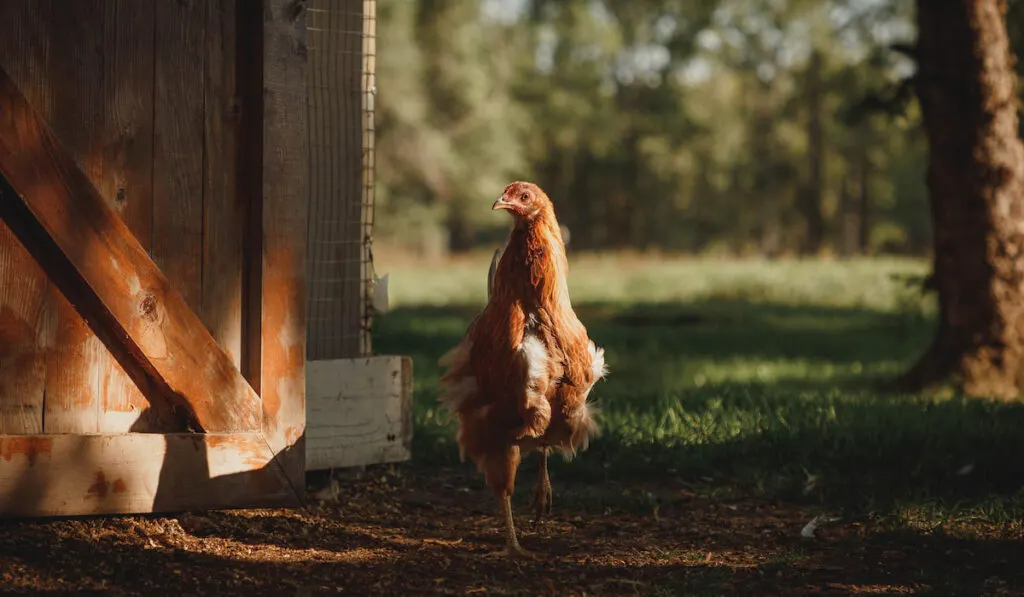
Meat Production
As earlier mentioned, Easter Eggers are primarily raised for their commendable egg-laying abilities. That said, you can also raise Easter Eggers for meat.
However, due to their small size, Easter Eggers’ meat production is not sustainable for commercial purposes.
Varieties
As we have already established, Easter Eggers are more of a chicken variety than an individual breed.
That being said, Easter Eggers come in a variety of plumage colors and features that can drastically vary from one chicken to another.
This is largely why the American Poultry Association does not recognize Easter Egger as a standard chicken breed.
Temperament
As you would expect, Easter Eggers are friendly and docile birds that are curious, but gentle with humans and other chickens.
This naturally makes them a worthy addition to your flock and makes them a great pet option for adults and children alike.
Keep in mind that Easter Eggers are, however, prone to bullying by other chicken breeds due to their small size and timid nature.
As such, Easter Eggers are better housed with other easygoing chicken breeds like Cochins.
As timid as they are, Easter Eggers will not shy away from approaching you for treats and even quality lap sessions or petting.
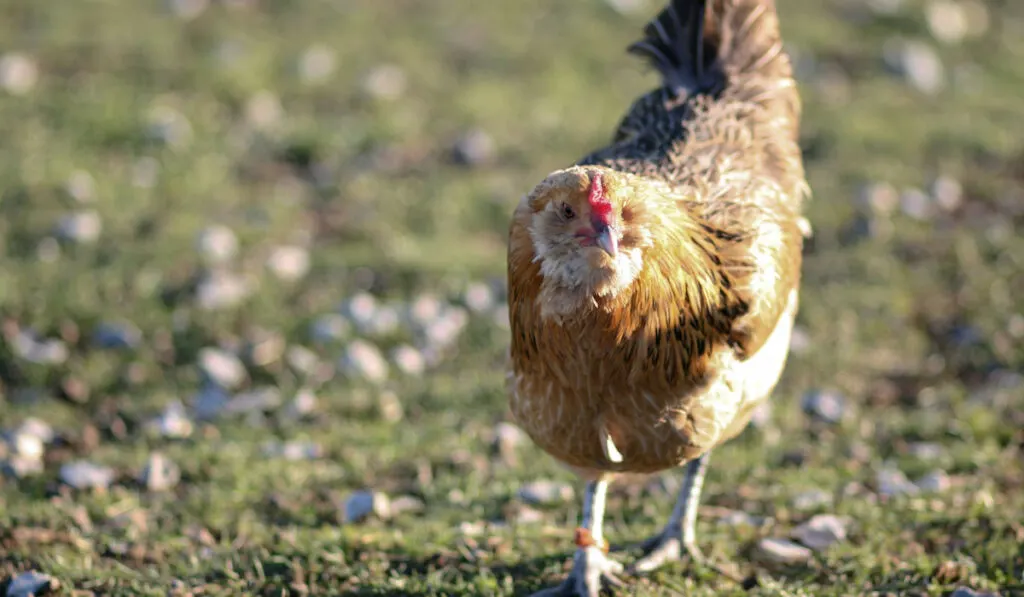
Broodiness
Easter Egger hens rarely go broody. They are barely interested in incubating their eggs or raising their young.
The birds dedicate all their time to laying their beautiful eggs, which means you will have plenty of eggs for consumption.
You should, however, invest in an incubator if you want to expand your Easter Egger flock.
Housing
Since Easter Eggers are generally small birds, a 3 to 4 square feet coop space per chicken will suffice. Similarly, a roosting space of 8 to 10 inches per chicken will also work.
On the other hand, 12 by 12-inch nesting boxes will fit any Easter Egger hen perfectly.
Nutrition
Nutrition for Easter Eggers is not different from what you would feed any other chicken breed.
Start your chicks with a 21% starter feed. Your chicks should never consume adult birds’ food to avoid digestive complications.
Switch to an 18% grower feed when your chicks get to 8 weeks to when they mature and lay their first egg, after which you can switch to 16% layer feed.
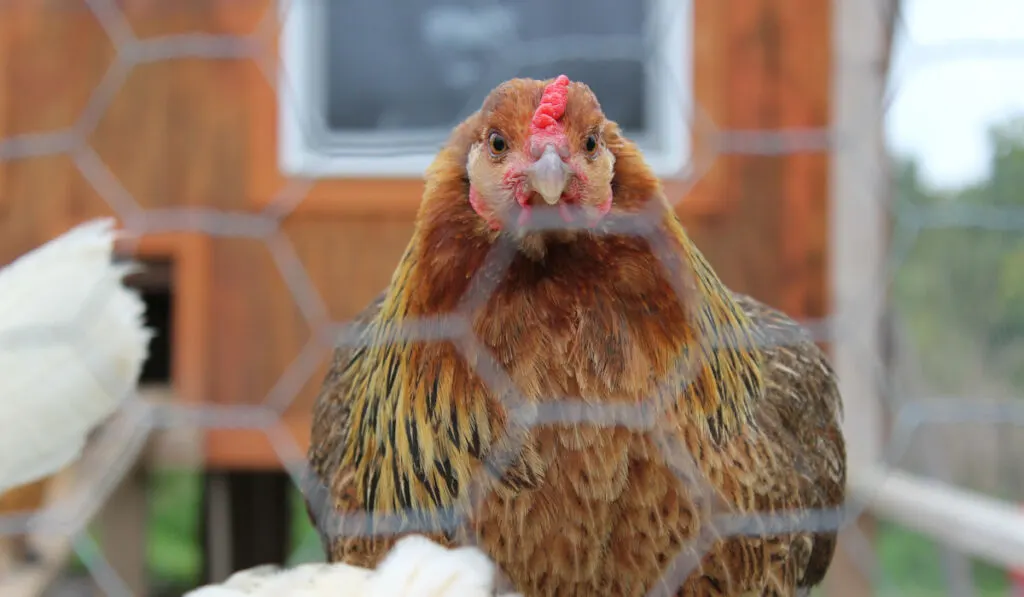
Common Health Issues
Luckily, Easter Eggers are quite a robust chicken variety that has no special genetic conditions to worry about.
If you have a flock of Easter Eggers, it is important to keep an eye out for common lice, scissor beaks, and mites, especially for bearded chickens.
Scissor beak or cross beak happens when the top and bottom beaks overlap or fail to align properly.
While a chick can lead a healthy and happy life with a cross beak, it will certainly need some special considerations to thrive.
Pinpointing the cause of a cross beak is challenging, but the time it appears can give an insight into the possible causes. For instance:
| Disease | Stage in life | Causes |
| Cross beak or scissor beak. | At hatching | Poor incubation conditions. Genetic issues. Wrong positioning of the embryo in the egg. |
| At 4 -12 weeks | Nutritional deficiency. Injury. |
Depending on when it occurs, offering feed mash (starter, grower, layer) can help ensure that birds feed adequately.
Consider using yogurt, water, or any other nutritional solution to wet the feed and add its nutritional value.
Unfortunately, some cases may be severe enough to require regular beak trimming to prevent overgrowth.
Final Thoughts
There you have it. From their unmatched egg production to their cool and fun personality, hardiness, and low maintenance, Easter Eggers are no doubt worthy additions to your backyard flock.
And while they do not meet the standards of showing in exhibitions, they make great ornamental birds to accent your home or farm while guaranteeing a constant supply of real-life Easter eggs.
Resources
- https://cs-tf.com/chicken-comb/
- https://meyerhatchery.zendesk.com/hc/en-us/articles/360017990812-Cross-Beak-Causes-and-Management
- https://en.wikipedia.org/wiki/Easter_egger
- https://www.thehappychickencoop.com/easter-egger/
- https://www.mypetchicken.com/pages/easter-eggers
- https://cs-tf.com/easter-egger-chicken/
- https://www.jrpiercefamilyfarm.com/blog-1/easter-egger-chicken
- https://the-chicken-chick.com/ameraucana-easter-egger-or-araucana/
- https://www.farmersalmanac.com/what-are-easter-egg-chickens-11097
- https://104homestead.com/anatomy-egg-color/
